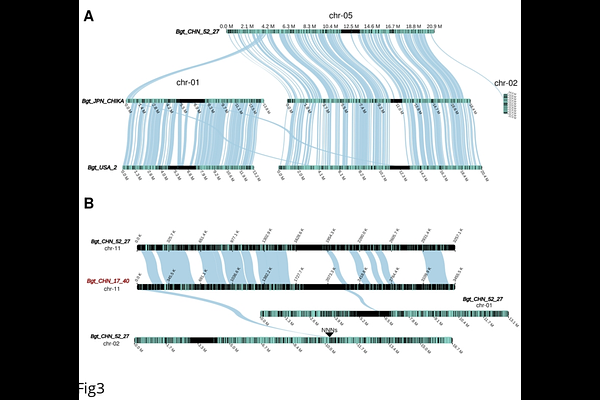Combining pangenomics and population genetics finds chromosomal re-arrangements, accessory-like chromosome segments, copy number variations and transposon polymorphisms in wheat and rye powdery mildew

Combining pangenomics and population genetics finds chromosomal re-arrangements, accessory-like chromosome segments, copy number variations and transposon polymorphisms in wheat and rye powdery mildew
Sotiropoulos, A. G.; Müller, M. C.; Kunz, L.; Graf, J. P.; Kiss, L.; Hückelhoven, R.; Keller, B.; Wicker, T.
AbstractGrass powdery mildews (Blumeria spp.) include economically important fungal crop pathogens with complex and highly repetitive genomes. To investigate the diversity and genome evolution in Blumeria graminis, we combined population genetic and pangenomic analyses using a worldwide sample of 399 wheat powdery mildew isolates. Additionally, we produced high-quality genome assemblies for seven isolates from wheat and one from rye powdery mildew. Using these, we compiled the first grass powdery mildew pangenome comprising 11 Blumeria graminis isolates. We found multiple chromosomal rearrangements between the isolates that grow on wheat, rye and/or triticale hosts. Interestingly, chr-11 showed some characteristics of accessory chromosomes such as presence/absence of large chromosomal segments and higher sequence diversity. Additionally, we identified nearly 67,000 cases of copy number variations (CNVs), which were highly enriched within effector gene families. Furthermore, we found evidence for recent and high transposable element (TE) activity, such as high numbers of TE insertion polymorphisms. Analyses of TE families showed enrichment 1 kb to 2 kb up- and downstream of effector genes, and we also found high levels of TE insertion polymorphisms between populations. Our results demonstrate that chromosomal variations, gene family expansions and contractions, and TE activity are important sources of genome diversification and diversity in grass powdery mildews. Our findings indicate that a combination of pangenomic and population genetics analyses is needed to understand drivers of evolution in plant pathogenic fungi in a comprehensive way.